

Aft Upper Skin or Turtle DeckTiming for final installation of the aft upper skin is important. You can drill, countersink and fit everything any time. But be sure you are finished with everything inside the tail before you rivet the skin on. I didn’t have this option. I had to move and needed to make the fuselage secure with the canopy installed before I moved. So I installed the aft upper skin a lot earlier than I wanted to. This meant I spent a lot of time lying on the wood braces inside the tail. This was not fun! 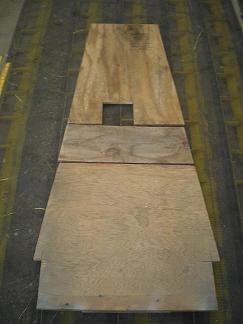
The
plans show you how to make some
plywood boards to set on
the lower longerons. I
ended up with a
few changes to the boards as parts were installed.
The plans made no provision for the elevator
bellcrank. So I cut
the plywood
down. This worked
out well as I used
that small piece of plywood often across the floor ribs in the main
cabin area
as I was working there.
Tie Down Holders I made my tie down holders out of scraps of aluminum. This is lighter then steel nuts, and since I had the parts handy, was easier too. A couple of rivets hold each to the F-869 gussets. 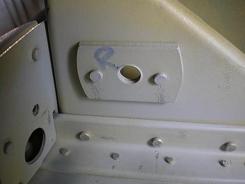 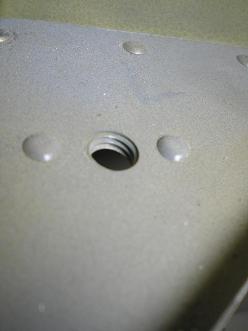 F-882 Canopy Rail Receptacle
Make sure the flanges on the bulkheads match perfectly with the inside of the F-825 aft upper skin—don’t leave any gaps. If the fit isn’t good, the thinner skin will get pulled to the bulkhead when you rivet. This will cause the skin to have a wavy appearance across the rivet line. The rivets will be sitting lower and the skin between them will bump out. This meant I had to cleco the skin on, mark the flanges that needed tweaking, remove the skin, and bend the flanges. Then repeat the entire process. Yes, it took a long time and a lot of installing and removing. But the final finish is worth it. Any bumps in the smooth curve across the back of your plane will be very conspicuous. I also made some thin shims to fill the space, caused by the lower skins, between the F-805 skin and the bulkheads just above the F-887 upper longeron. I didn’t want the side of the plane to have a bend inward just above the F-887. I used a piece of scrap aluminum that was thick enough to fill the gap at the bottom, usually .032. I cut it about two to three inches long, and wide enough to sit across the bulkhead. Then I filed it into a wedge shape so it would be thicker on the bottom and taper off at the top. Then I bent it to fit the curve of the bulkhead and fit it in the space. If it was too big, I cut it shorter or filed it thinner as required until it neatly filled the void. I left the shim long enough to stop half way between rivets. I then drilled and dimpled holes through the shim to match the holes in the skin and bulkhead. When I riveted the skin on, I had to use rivets a little longer than the call out for the first few holes.
Return from Aft Upper Skin to Fuselage Return from Aft Upper Skin to Kit Plane Advice Home |
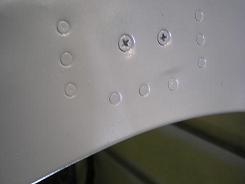 I
had a hard time
riveting the bottom
three rivets on the
F-882, because I riveted them after I had riveted the sides.
I
had a hard time
riveting the bottom
three rivets on the
F-882, because I riveted them after I had riveted the sides.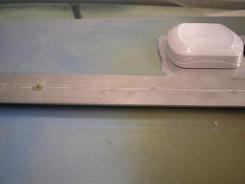 I drilled and screwed the
canopy rail
completely on at this
point.
I drilled and screwed the
canopy rail
completely on at this
point.